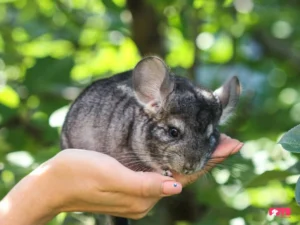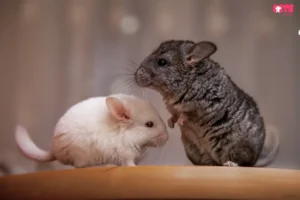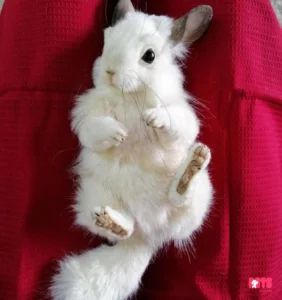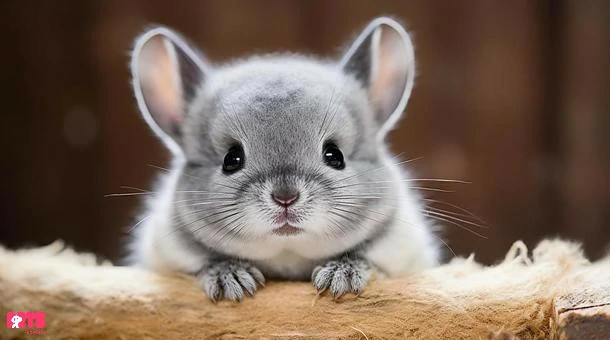Baby Chinchilla is little, furry rodents that have become popular pets because of their charming characters and unusual fur. Child chinchillas, often called “kits,” are cute, and need specific information to focus on one. In this article, we will jump into everything you want to know about baby chinchillas, including their behavior, care needs, and the different parts of their lives.
Understanding Baby Chinchilla:

A newborn Baby Chinchilla, commonly known as a kit, is a delicate and sensitive animal that requires care during its early life. These are recognized for their silky coats, active personalities, and high activity levels. Chinchillas initially hair from the Andes heaps of South America, and their thick fur safeguards them from cold conditions.
As pets, chinchillas require attention and legitimate consideration to grow into adulthood. Let’s explore various aspects of baby chinchillas and how we investigate the different parts of child chinchillas, including their appearance, diet, behavior, and unusual needs.
Baby Chinchilla Appearance:
Child chinchillas are brought into the world with their eyes open and canvassed in fur. They weigh around 35-60 grams at start and seem like mini versions of grownup chinchillas. Their coats are enormously soft, with large, round ears and a hairy tail. As kits, they grow fast and broaden their function fur texture and coloration to the point they’re some weeks antique.
Chinchilla Colors:

Chinchillas come in a variety of colors, which adds to their charm. While the same old colour is gray, selective breeding has added many shades. Here are the most common chinchilla colors:
| Color | Behavior | Specification | Lifespan | Coat Type |
| Standard Gray | Playful, active, friendly | Most common, light gray color | 10-15 years | Dense, soft |
| Black Velvet | Slightly reserved, calm | Black with silver shading on the belly | 10-15 years | Sleek, smooth, shiny |
| White Mosaic | Curious, affectionate | White fur with patches of gray or black | 10-15 years | Silky, luxurious |
| Beige | Calm, gentle | Light beige or champagne color | 10-15 years | Plush, fluffy |
| Ebony | Social, energetic | Dark black, uniform color throughout | 10-15 years | Velvety, thick |
| Sapphire | Intelligent, a bit shy | Blue-gray color, rare | 10-15 years | Super soft, smooth |
| Violet | Playful, very social | Light violet hue, rare | 10-15 years | Soft, velvety |
Behavior Of Baby Chinchillas:

Chinchillas are social creatures, and their personalities begin to be revealed from a young age. Baby chinchillas are curious, active, and love to explore their environment. Providing them a safe, enriching environment where they can play and exercise.
Kits are nocturnal, which means they are most energetic at night, and may now and then be a chunk shy during the day. However, with time and patience, child chinchillas become very attached to their owners, taking part in light handling and petting. It’s important to handle them carefully, especially when they are small, as they are delicate and touchable.
Dietary Needs Of Baby Chinchilla:
Feeding infant chinchillas the proper meals is essential to their fitness and improvement. Initially, kits feed on their mother’s milk for the first 6-8 weeks. After that, they can be slowly introduced to strong ingredients. The main diet of a chinchilla includes:
- Grass: Timothy grass or other types of grass should be the main part of their diet. This helps with their digestive health and eliminates their ever-growing teeth.
- Pellets: Chinchilla-specific pellets are available and provide essential vitamins and nutrients.
- New Water: Ensure new water is generally accessible.
- Treats (Occasionally): Small amounts of dry fruits, rose hips, or wooden chew toys can be offered as treats.
Housing And Care For Baby Chinchilla:
Chinchillas want a spacious cage with excellent ventilation. The cage should have two ranges, as these little creatures like to jump and climb. Place soft bedding such as a paper-based product at the bottom of the cage to prevent foot injuries.
Chinchillas need customary residue showers to keep their fur clean. Baby chinchillas can start taking dirt baths after a few weeks. Use special chinchilla dirt, which helps remove oil and dirt from their fur.
Key Tips For Chinchilla Housing:
- Provide chew toys to help keep your teeth healthy.
- Ensure the enclosure can’t be gotten away.
- Maintain a temperature of 55–65°F (10–16°C).
- Avoid from direct daylight or drafts, as chinchillas are inclined to overheat.
Health And Lifespan of Baby Chinchillas:
A very really enjoyed chinchilla can satisfy 15-20 years. Customary vet check-ups, a legitimate eating regimen, and mental feeling are fundamental for a child chinchilla to develop into a sound grown-up.
Health problems to watch for include:
- Dental Issues: Overgrown teeth can cause eating problems and pain.
- Heatstroke: Chinchillas are delicate to high temperatures and can endure heatstroke in warm environments.
- Respiratory Contaminations: Unfortunate ventilation or dusty conditions can cause breathing issues.
Conclusion:
Baby chinchillas make awesome pets for those able to put time and exertion into their consideration. Their lively nature, unusual fur, and long life expectancy make them exceptional companions. However, prospective owners should know their needs, from food to housing, to ensure they thrive.
Whether it’s a standard dark or an interesting violet chinchilla, figuring out their behaviours, care needs and unusual traits will help you raise a happy, vocal chinchilla.
FAQs
How often should I handle my baby chinchilla?
Handle your baby chinchilla gently and consistently from the beginning to build confidence. Start with short meetings, gradually increasing the time as they become more comfortable.
How many dust baths does a baby chinchilla need?
child chinchillas can start bathing after half a month, but they only need 2-3 baths per week. Too much rain can dry out their skin.
What should I avoid feeding my baby chinchilla?
Avoid giving your chinchilla sweets, fresh vegetables, or natural products too often. It can cause stomach problems. Stick to roughage, pills, and occasional chinchilla-safe treats.

